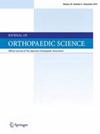高强度力量训练改善髋部骨折患者的活动能力:随机对照试验的荟萃分析。
IF 1.4
4区 医学
Q3 ORTHOPEDICS
引用次数: 0
摘要
背景:髋部骨折影响数百万人,并与过高的发病率和死亡率相关。需要更多的知识来考虑高强度运动对相对虚弱的髋部骨折患者的长期影响。在这项荟萃分析中,我们想要确定髋部骨折后患者进行强度力量训练是否优于一般运动来改善身体功能。方法:我们检索了Pubmed、Cochrane、MEDLINE、谷歌Scholar和Embase等电子文献数据库,从建立到2023年11月,检索了比较训练组和对照组髋部骨折患者的随机对照试验(rct)。本荟萃分析的主要终点为Berg平衡量表(BBS)。次要结局为Short-Form 36 physical function score (SF-36 physical function score)和6分钟步行测试(6MWT)。结果:我们纳入7项随机对照试验,共665例患者。训练组的BBS和SF-36身体功能评分(MD = 4.45, 95%CI 1.47 ~ 7.43, Z = 2.93, P = 0.003)和(MD = 16.31, 95%CI 4.92 ~ 27.69, Z = 2.81, P = 0.005)均显著优于对照组(MD = 4.45, 95%CI 1.47 ~ 7.43, Z = 2.93, P = 0.003)。结果显示,训练组的6MWT明显延长(MD = 83.32, 95%CI 46.73 ~ 119.91, Z = 4.46, P)。结论:我们的荟萃分析显示,强度力量训练,包括力量训练、平衡任务专项训练和髋部骨折后患者上肢运动训练,在改善BBS、SF-36身体功能评分和6MWT方面优于一般运动。本文章由计算机程序翻译,如有差异,请以英文原文为准。
High-intensity strength training improves mobility in patients after hip fracture: A meta-analysis of randomized controlled trials
Background
Hip fracture affects millions of persons and is associated with excess morbidity and mortality. More knowledge is needed to regard the prolonged effects of intensive exercise in relatively frail hip fracture patients. In this meta-analysis, we want to determine whether intensity strength training in patients after hip fracture is superior to general exercises in improving physical function.
Methods
We searched electronic literature databases, including Pubmed, Cochrane, MEDLINE, Google Scholar, and Embase from inception to November 2023 for randomized controlled trials (RCTs) comparing training group with control group in patients after hip fracture. The primary endpoint of this meta-analysis was Berg balance scale (BBS). The secondary outcomes were Short-Form 36 physical function score (SF-36 physical function score) and Six-minute walk test (6MWT).
Results
We included 7 RCTs with a total of 665 patients. The BBS and SF-36 physical function score were significantly better in the training group (MD = 4.45, 95%CI 1.47 to 7.43, Z = 2.93, P = 0.003) and (MD = 16.31, 95%CI 4.92 to 27.69, Z = 2.81, P = 0.005) respectively. The result showed that the 6MWT was significantly longer in the training group (MD = 83.32, 95%CI 46.73 to 119.91, Z = 4.46, P < 0.00001).
Conclusions
Our meta-analysis shows that intensity strength training, including strength training, balance task-specific training, and upper-body exercise training in patients after hip fracture, is superior to general exercises in improving BBS, SF-36 physical function score and 6MWT.
求助全文
通过发布文献求助,成功后即可免费获取论文全文。
去求助
来源期刊

Journal of Orthopaedic Science
医学-整形外科
CiteScore
3.00
自引率
0.00%
发文量
290
审稿时长
90 days
期刊介绍:
The Journal of Orthopaedic Science is the official peer-reviewed journal of the Japanese Orthopaedic Association. The journal publishes the latest researches and topical debates in all fields of clinical and experimental orthopaedics, including musculoskeletal medicine, sports medicine, locomotive syndrome, trauma, paediatrics, oncology and biomaterials, as well as basic researches.
 求助内容:
求助内容: 应助结果提醒方式:
应助结果提醒方式:


